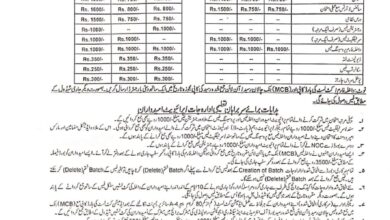Change in School Timing

Change in School Timing
Change in School Timing
Introduction
Table Of Contents
The increasing levels of smog in many urban areas have led to widespread concern about its impact on public health, particularly among school-going children. In response, authorities in several regions have made adjustments to school timings to safeguard students from the harmful effects of smog exposure. This article delves into the reasons behind such changes, the implications for education and health, and the measures being taken to adapt to this environmental challenge.
What Is Smog, and Why Is It a Concern
Smog, a combination of smoke and fog, primarily consists of harmful pollutants like particulate matter (PM2.5 and PM10), ozone, and nitrogen oxides. It is often caused by industrial emissions, vehicle exhaust, and agricultural burning. The health risks associated with smog include:
- Respiratory Issues: Smog can trigger asthma, bronchitis, and other respiratory conditions, particularly in children with underdeveloped immune systems.
- Reduced Lung Function: Prolonged exposure can impair lung growth in children, leading to chronic health problems.
- Eye and Skin Irritation: The pollutants in smog can cause discomfort and irritation to sensitive tissues.
Why Are School Timings Being Changed?
Minimizing Morning Exposure
In many regions, smog levels are at their highest during early morning hours due to temperature inversions that trap pollutants close to the ground. By shifting school timings to later in the day, children are exposed to cleaner air.
Reducing Health Risks
Studies have shown that even short-term exposure to smog can have long-lasting effects on children’s health. Adjusting school hours helps mitigate these risks and demonstrates a commitment to prioritizing public health.
Encouraging Behavior Change
These changes also raise awareness about the broader issue of air pollution, encouraging families and communities to adopt sustainable practices.
Impact of Smog on Education and Daily Life
Disrupted Learning
While changing school hours protects health, it can disrupt established routines. Parents, especially working professionals, may find it challenging to accommodate new schedules.
Increased Stress on Transportation
Later school timings could lead to increased congestion during peak hours, affecting traffic patterns in urban areas.
Potential for Online Education
In areas where smog is particularly severe, some schools are adopting hybrid or fully online learning models as a temporary solution.
Steps Taken by Authoritie
Authorities worldwide are implementing various measures to address the issue of smog and its impact on schools:
- Monitoring Air Quality: Regular updates on AQI (Air Quality Index) help determine the severity of smog and guide decision-making.
- Distributing Masks: Providing N95 masks to students ensures an additional layer of protection.
- Implementing Emission Controls: Stricter regulations on industries and vehicles aim to reduce pollutant levels.
- Encouraging Tree Plantation: Afforestation drives near schools can create natural barriers against pollution.
What Schools and Parents Can
Schools
- Install Air Purifiers: Indoor air purification systems can significantly reduce exposure.
- Introduce Awareness Campaigns: Educating children about air pollution helps them understand and adopt preventive measures.
- Provide Flexible Schedules: Offering hybrid models or postponing outdoor activities until AQI improves.
Parents
- Use Protective Gear: Ensure children wear high-quality masks when outdoors.
- Limit Outdoor Activities: Encourage indoor play during high-smog periods.
- Advocate for Cleaner Practices: Support policies and initiatives aimed at reducing pollution.
The Long-Term Solution: Combating Smog at Its Source
While changing school timings is an effective short-term solution, addressing the root causes of smog is critical. This includes:
- Promoting Renewable Energy: Transitioning to cleaner energy sources reduces industrial emissions.
- Encouraging Public Transport: Reducing vehicle dependency lowers traffic-related pollution.
- Enforcing Stricter Regulations: Stronger laws on industrial emissions and waste burning are necessary.
Conclusion
The adjustment of school timings due to smog is a crucial measure to protect the health and well-being of students. However, it highlights the urgent need for collective action against air pollution. By implementing comprehensive policies, adopting sustainable practices, and prioritizing environmental awareness, we can create a healthier future for our children.
اسموگ میں بہتری ،سکولوں کے اوقات کار میں تبدیلی کردی گئی۔*
سکول کے اوقات کار میں تبدیلی
پنجاب بھر کے تمام سرکاری اور نجی سکول صبح 8:15 بجے سے پہلے نہیں کھلیں گے۔
یہ حکم 4 دسمبر 2024 (بدھ) سے نافذ العمل ہوگا اور تا حکم ثانی برقرار رہے گا۔
ڈائریکٹر جنرل ادارہ تحفظ ماحول پنجاب، ڈاکٹر عمران حامد شیخ کی جانب سے نوٹیفکیشن جاری

Join Us On For Latest Updates For Click Here To Get All Latest Government Jobs And Education News : https://mediaandjobs.com/
You Can Join Our What’s app Group
https://chat.whatsapp.com/CVwROiD9kKSFwq6pnIdQxi
Click Here To Join Our Facebook Page To Get All Latest Government Jobs And Education News : https://www.facebook.com/profile.php?id=100085051735597&mibextid=ZbWKwL
Download And Get Here all Data Of Your Requirement in One File https://heylink.me/EarnWithSSS/



